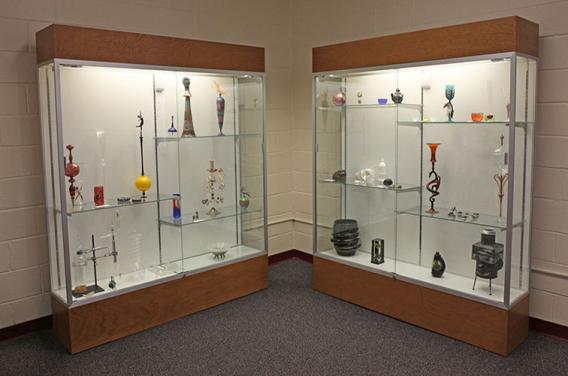Michael S. Cettei Memorial Library
- Donaghay Hall room DON111
- 856.351.2681
- library@salemcc.edu
STUDENTS ONLY
Welcome to the
Michael S. Cettei Memorial Library
Visit us during normal business hours in Donaghay Hall, room DON111.
The Library’s collection includes books, e-Books, periodicals, audiovisual items, streaming videos and online databases, as well as other materials selected to support and enrich SCC's academic programs. General information and electronic resources are accessible through the Library’s web page.
- Over 15,000 circulating books and DVDs;
- Over 45,000 downloadable e-Books;
- 60+ online subscription databases and encyclopedias which offer access to general, art related, business, legal and nursing/allied health periodicals. Most databases can be accessed from home with student ID number.
- The ability to search the library catalog online with LOGIN.
- Online access to the current collection through the LOGIN network, with online borrowing privileges at 23 libraries in Salem, Cumberland, and Gloucester counties.
- Inter-library loans with Jersey Cat: a statewide union catalog that offers loan services from NJ academic, public, and school libraries.
- APA and MLA guides.
- In person instruction on how to use the library.
- Online and in-person tutorials on how to use the digital services.
- Access The University of Pennsylvania Museum of Archaeology and Anthropology with the Museum Pass Program.
- Contemporary Glass Resource Center featuring work from world renowned artists and resources donated by several benefactors.
Along with a pleasant space for students to study, relax, and research information in person the Library also provides:
- In-library lendable laptops with full network access (current SCC student ID required).
- 18 desktops computers with full network access (current SCC student ID required).
- Private study carrels, large-study tables, and comfortable reading areas.
- Secure wireless Internet for personal laptops and smartphones.
- Access to the library printer when logged into a SCC Library Computer.
- Laptop Rental Agreement for current students with a current SCC ID.
Mango Languages
Over 70+ languages for SCC Library members
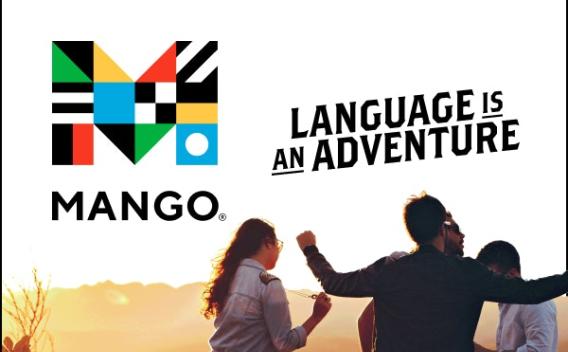
Laptop Rentals
Students can rent laptops overnight or for scheduled time period. Please see the front desk for more information. Limited quantity available.

Museum Pass Program
Students, faculty, and staff have free access to selected museums.
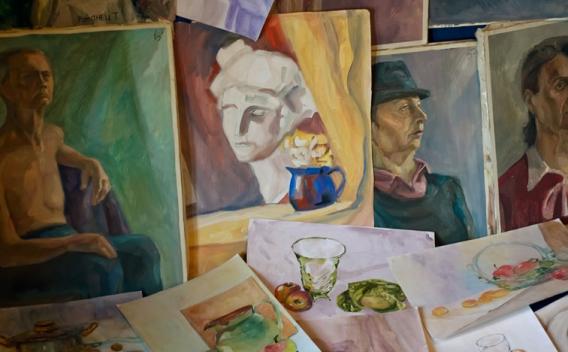
Special Events
The Salem Community College Michael S. Cettei Library holds different different events such as contests, occasional author visits and artist visits. Stay up to date with the latest news and details about upcoming visits here.
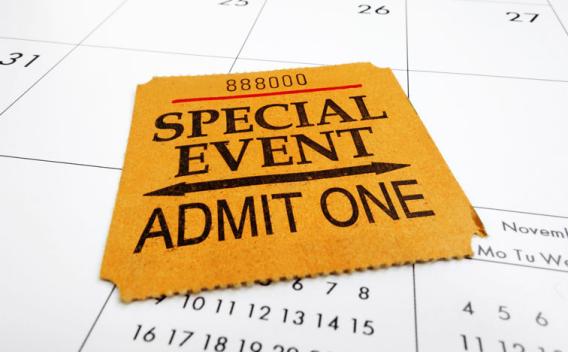
Academic Documentation Guides
Rules, examples and explanations of APA, MLA, Plagiarism and Copyright Fair Usage. Students can use these as a reference for research and essays.
The Library Handbook explains library code of conduct and the policies for book and computer loans.
Basic Rules
- Reference page should be titled as "References" (do not use quotation marks) and should be double spaced.
- Sources are listed alphabetically by author's last name. If an author is not available for the source, then list the source by title.
- Use initials for an author, creator, or editor's first name.
- All additional lines for each citation listed should be indented using a hanging indent (half an inch from the left margin).
- If no date is given use (n.d.).
Resources
- Publication Manual of the American Psychological Association: Two copies are located in the library under call number REF BF76.7 .P83 2001 (Reference only; does not circulate).
- http://apastyle.apa.org/
- http://owl.english.purdue.edu/owl/printable/560/
Books
with no author
Illegal immigration: A reference handbook. (2007). Santa Barbara, CA: ABC-CLIO, Inc.
with one author
LeMay, M. C. (2007). Illegal immigration: A reference handbook. Santa Barbara, CA: ABC-CLIO, Inc.
with two authors
Jones, R. S. & Patterson, J. P. (2008). A history of the Roman Empire. New York, NY: History Publications, Inc.
with three to seven authors
Jones, R. S., Patterson, J. P., & Sanderson, M. (2008). A new history of the Roman Empire. London, England: Royal Publications, Inc.
with more than seven authors
Miller, F.H., Choi, M.J., Angeli, L. L., Harland, A. A., Stamos, J. A., Thomas, S. T., ... Rubin, L. H. (2009). Web site usability for the blind and low-vision user. Technical Communications, 57, 323-335.
edited book
Andrews, C. (Ed.). (2008). Issues in nursing today. New York, NY: Medical Publications, Inc.
an e-Book
Shaver, B. (2011). Moving the eye through 2-D Design. Retrieved from http://site.ebrary.com/lib/salemcc/docDetail.action?docID= 10432132
Articles
Anderson, K. (2007, March 19). 1848: When America came of age. Time, 44(12), 72-74.
Database Articles
Rahdert, M. C. (2007). Of personality and principal: 'The Supreme Court' Chronicle of Higher Education, 53(2), 14-15. Retrieved from Academic Search Premier. Heider, K. (2013). Identifying Resources that Support Research and Publication in the Field of Early Childhood Education: Advice from an Education Librarian. Early Childhood Education Journal, 41(1), 55-63. doiL10.1007/s10643-012-0568-z.
Websites
Dunham, W. (2007, March 15). Immense ice deposit found at south pole of Mars. Retrieved from http://news.yahoo.com/s/nm/20070315/ts_nm/mars_water_dc.
an online encyclopedia (*From www.wikipedia.org)
Plagiarism. (2004, July 22). In Wikipedia, the free encyclopedia. Retrieved from http://en.wikipedia.org/wiki/Plagiarism
- If no author or creator can be found, start with title then date of publication or last update.
- Retrieval dates are not required unless the source material is subject to change over time.
Films
Winter, J. (Producer), & Noyce, P. (Director). (2003). Rabbit-proof fence [Motion Picture]. United States: Miramax. Films Media Group. (2009). Catholicism: The Unpredictable Rise of Rome. [Video file]. Films on Demand. Retrieved from http://digital.films.com/PortalPlaylist.aspx?aid=11896&xtid=44763
Encyclopedias
entire Encyclopedia or Dictionary
Lee, S. (Ed.). (2007). The Encyclopedia of the Middle East (5th ed., Vols.1-5). London,England Royal Publications, Inc.
entry in an encyclopedia
Marks, S. (2008). Leonard Euler. In Great mathematicians in history (Vol.2, pp. 201-203). New York, NY: Learning Publications, Inc.
Newspaper Articles
with no author
Local town parade to be held on September 4th. (2008, July 15). Today's Sunbeam, p. A9
with one author
Grant, M. J. (2008, December 5). Local high school football team wins area championship. The News Journal, p. C4, C7. letter to the editor
Smith, A. (2008, March 4). How to improve roads in today's economy [Letter to the editor]. Philadelphia Inquirer, p. A13.
Interviews
Interviews are not to be listed on your "Works Cited" page. Use parenthetical citations for referencing an interview. (See example below.)
Assemblywoman Margaret Smith said that she would not vote on the bill to raise state income tax in 2010 (M. Smith, personal communication, March 4, 2008).
In text citation (Parenthetical citation)
When stating information, facts, figures, or someone else's opinion from a source in the text of a research paper use a parenthetical citation to protect yourself from plagiarism. (See example below.)
General Patton moved his advancing 3rd Army north to relieve the American troops surrounded at Bastogne (McAdams, 2007, p. 325).
For complete and always up-to-date information on the MLA style, please visit the MLA Style Guide website at https://style.mla.org/
Another great resource is the Purdue Online Writing Lab.
There are also writing guides available in the SCC Library.
Citations
It is necessary to include in-text citations which are further detailed in a Works Cited page.
Below are basic examples of the most common citations. Please note that more complex references are handled differently, links to these are provided at the end of the page.
In-Text Documentation
By including a reference in-text, writers alert their readers that a specific piece of information has been pulled from a source.
An author includes cited information by quoting, paraphrasing, or summarizing. Each source is also named either within the phrase, or in parentheses at the end.
If the source author is named within the phrase, only page numbers are included in parentheses at the end. If the author is not named, both author and page number must be included.
Within phrase:
David Thelen writes that students have felt disconnected from history since 1916 (156).
Parenthetical:
As early as 1916, students have felt disconnected by the schoolroom idea of learning chronological facts (Thelen, 156).
Possible Complications:
- Two or more works by the same author
- Authors who share a last name
- Two or more authors
- Organization or government as author
- Author unknown
- Literary works with multiple editions
- Work in an anthology
- One-page article or citing an entire work
- Encyclopedia or Dictionary
- Legal and historical documents
- Sacred text
- Multi-volume source
- Two or more works cited together
- Source quoted by another source
- Work without page numbers
Purdue OWL has provided a great resource for how to deal with complexities of in-text citations.
Works Cited
Key information needed for a Works Cited list is as follows:
- Author
- Title of source
- Title of anthology, website, journal, magazine, database, etc. *
- Editor, translator, director, or contributor*
- Version, volume, and/or issue number*
- Publisher or sponsor
- Date of publication
- Location of source, such as page number, DOI, URL, permalink, etc.
* If applicable
How to cite some of the most common sources on a Works Cited page:
Book
Author’s last name, first name. Title. Publisher, Date.
Example: Baldwin, Neil. Edison: Inventing the Century. Hyperion, 1995.
Author and Editor or Translator
Author’s Last Name, First Name. Title. Role by First and Last names, Publisher, Date.
Example: Austen, Jane. Emma. Edited by Stephen M. Parrish, W. W. Norton, 2000.
Print Magazine Article
Author’s Last Name, First Name. “Title of Article.” Name of Magazine, Date, Pages.
Example: Neyfakh, Leon. “The Future of Getting Arrested.” The Atlantic, Jan.-Feb. 2015, pp. 26-2.
Online Magazine Article
Author’s Last Name, First Name. “Title of Article.” Name of Magazine, Date on web, Pages (if any), URL. Accessed by Day Month Year.
Example: Thelen, David. “Learning from the Past: Individual Experience and Re-Enactment.” Indiana Magazine of History. Vol 99, Issue 2: June 2003, 155-171. https://scholarworks.iu.edu /journals/index.php/imh/article/view/11990/17687. 4 Dec 2017.
Journal Article Accessed Through a Database
Author’s Last Name, First Name (if any). “Title of Article.” Name of Periodical, Volume, Issue, Date, Pages. Name of Database, DOI or URL. Accessed Day Month Year.
Example: Gill, Maninder Singh. “A single Ingredient for Primary Glass Production: Reassessing Traditional Glass Manufacture in Northern India.” Journal of Glass Studies, Vol. 59, Jan 2017, pp. 249-259. Art Full Text (H.W. Wilson), http://web.a.ebscohost.com /ehost/detail/detail?vid=18&sid=958bdfe2-46a4-4b9f-921c-b5046c895dc0%40sessionmgr4009&bdata=JnNpdGU9ZWhvc3QtbGl2ZQ%3d%3d#db=aft&AN=125672622. 16 Feb 2018.
*** Please note that a direct copy from EBSCOhost does not include proper formatting according to the current edition (8th) published in 2016, and does not include the date of access.
Purdue OWL also has a great resource for citing other common sources.
What is copyright?
Copyright provide an author or creator the ability to control how their work is used. It also provides an financial motivation to produce original works. The 1976 Copyright Act states, "Copyright protection subsists, in accordance with this title, in original works of authorship fixed in any tangible medium of expression, now known or later developed, from which they can be perceived, reproduced, or otherwise communicated, either directly or with the aid of a machine or device." (US Code, Title 17, Section 102)
*Source: (University of Maryland University College & Harford Community College)
What types of works are copyright protect?
- literary works;
- musical works, including any accompanying words;
- dramatical works, including any accompanying music;
- pantomimes and choreographic works;
- pictorial, graphic, and sculptural works;
- motion pictures and other audiovisual works;
- sound recordings; and
- architectural works (US Code, Title 17, Section 102)
*Source: (Harford Community College)
What is fair use?
Fair use is a check on a copyright holder's exclusive rights, which allows the use of copyrighted work for nonprofit or educational purposes. The fair use exemption states that "fair use of a copyrighted work, including such use by reproduction in copies... for purposes such as criticism, comment, news reporting, teaching (including multiple copies for classroom use), scholarship or research, is not an infringement of copyright." (US Code, Title 17, Section 107)
*Sources: (University of Maryland University College & Harford Community College)
What can be copied?
- A chapter from a book (Never the entire book).
- An article from a periodical or newspaper.
- A short story, essay, or poem.
- A chart, graph, diagram, drawing, cartoon or picture from a book, periodical, or newspaper.
- Poetry (Multiple copies of a poem of 250 words or less that exist on two pages or less or 250 words from a longer poem).
- Prose (Multiple copies of an article, story or essay that are 2,500 words or less or excerpts up to 1,000 words or 10 percent of the total work, whichever is less.
- Illustrations ( Multiple copies of a chart, graph, diagram, drawing, cartoon, or picture contained in a book or periodical issue).
*Source: (University of Maryland University College)
What should be avoided?
- Making multiple copies of different works that could substitute for the purchase of books, publisher's reprints, or periodicals.
- Copying the same works from semester to semester.
- Copying the material for several different courses at the same or different institutions.
- Copying more than nine separate times in a single semester.
*Source: (University of Maryland University College)
When is permission required?
- When you intend to use the material for commercial purposes
- When you want to use the materials repeatedly.
- When you want to use a work in its entirety and it is longer than 2,500 words.
*Source: (University of Maryland University College)
Sources
Harford Community College. " Copyright Basics." Harford Community College Library.
Harford Community Collge Library. 2009. 7 Sept. 2010.
University of Maryland University College. "Copyright and Fair Use in the Classroom, on the Internet, and the World Wide Web." Information and Library Services.
University of Maryland University College. 2010. 24 Aug. 2010.
*Copyright and Fair Use in the Classroom, on the Internet, and the World Wide Web used with permission, Information and Library Services, University of Maryland University College, Adelphi, MD.
Additional Resources
https://www.harford.edu/academics/library/about-the-library/policies/index.php
What is Plagiarism?
- Taking credit for someone else's work.
- Copying an author's work from a book or journal article without referencing.
- Cutting and pasting information from a Web site (such as wikipedia) into a word document without referencing.
- Taking someone's quote without crediting that person.
Examples of plagiarism:
- The most ancient Greek mathematical work which has reached us complete is Euclid's Elements.
- Americans are increasingly concerned that the housing troubles might undermine the overall economy.
- Claudius took several steps to legitimize his rule against potential usurpers, most of them emphasizing his place within the Julio-Claudian family.
- Her parents, Regina Cline O'Connor and Edward Francis O'Connor both came from Irish-Catholic families long established in Georgia.
(*Note the sentences above are copied without proper citation.)
Non-plagiarized work examples (with MLA citation):
- The most ancient Greek mathematical work which has reached us complete is Euclid's Elements (Carruccio 20).
- Americans are increasingly concerned that the housing troubles might undermine the overall economy (Walsh 16.)
- Claudius took several steps to legitimize his rule against potential usurpers, most of them emphasizing his place within the Julio-Claudian family ("Claudius," Wikipedia: The Free Encyclopedia).
- Her parents, Regina Cline O'Connor and Edward Francis O'Connor both came from Irish-Catholic families long established in Georgia (Kirk 8).
(*Note the sentences above are copied with proper MLA citation.)
Non-plagiarized work examples (with APA citation):
- The most ancient Greek mathematical work which has reached us complete is Euclid's Elements (Carruccio, 2006, p. 20).
- Americans are increasingly concerned that the housing troubles might undermine the overall economy (Walsh, 2008, p. 16).
- Claudius took several steps to legitimize his rule against potential usurpers, most of them emphasizing his place within the Julio-Claudian family ("Claudius", 2010).
- Her parents, Regina Cline O'Connor and Edward Francis O'Connor both came from Irish-Catholic families long established in Georgia (Kirk, 2008, p. 8).
(*Note the sentences above are copied with proper APA citation.)
Tips for preventing plagiarism
Use proper in-text (parenthetical) citation through out your research paper. Be sure to include a "Works Cited" page. (See the library's MLA & APA citation guides for creating a proper "Works Cited" page.
- Use a thesaurus to assist in finding other words to describe your subject.
- Keep rough drafts of your papers until you have received your final draft.
- Always allow a professor access to your sources.
Tools the library has for proper MLA & APA citation
- MLA Handbook for Writers of Research Papers (call number LB2369 .G53 2009)
- Publication Manual of the American Psychological Association (APA format) (call number REF BF76.7 .P83 2010)
- Cettei Library citation guides for APA and MLA, located on the library's Web page under "Student Links." (Also in print format at the front desk of the library.)
RESOURCES
(BOOKS, VIDEOS, & MAGAZINES)
Ebsco Search
View and request books and videos available at the SCC Library and from the library consortium.
Free Books
Download free e-books.
Search the Catalog
View and request books and videos available at the SCC Library and from the library consortium, as well as review open source journals.
Jersey Cat
View and request books from libraries throughout New Jersey.
Proquest Ebook Central
Access to over 46,000 academic e-books.
Exact Editions (3 x 3)
Access to magazines and books.
DATABASES FOR JOURNAL & NEWS ARTICLES
Black Freedom Struggles
Black Freedom Struggles is part of the ProQuest database. It gives unique, primary sources on specific times in U.S. history when African Americans faced oppression.
Chronicle of Higher Education
News, information and job listings for college and university populations.
CINAHL
(Cumulative Index to Nursing and Allied Health Literature) indexes the top nursing and allied health literature available including nursing journals and publications from the National League for Nursing and the American Nurses Association.
HeinOnline
HeinOnline is a premier online database containing legal history and government documents including works from some of the greatest minds in legal history, the entire Congressional Record, Federal Register, and Code of Federal Regulations, an entire database dedicated to constitutions and much more.
Hispanic Life in America
New resource! Our collection is designed to support multidisciplinary discussions and research on the impact and experience of Hispanic Americans as recorded by the news media. Start exploring here.
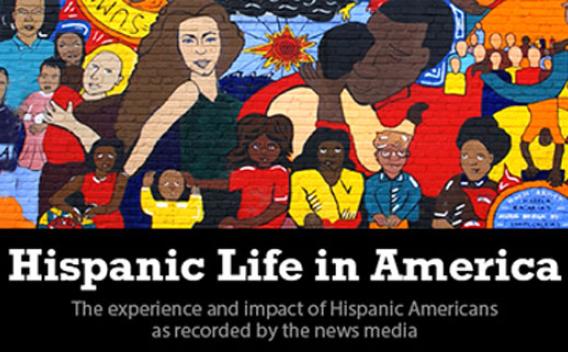
Databases & Journal Articles
Access to thousands of articles through 60 online databases.
Contemporary Glass Resource Center
Featuring works from world-renowned artists and resources donated by several benefactors. This center is a source of inspiration for creative people of all ages and includes videos of featured artists' demonstrations from the SCC International Flameworking Conference.
